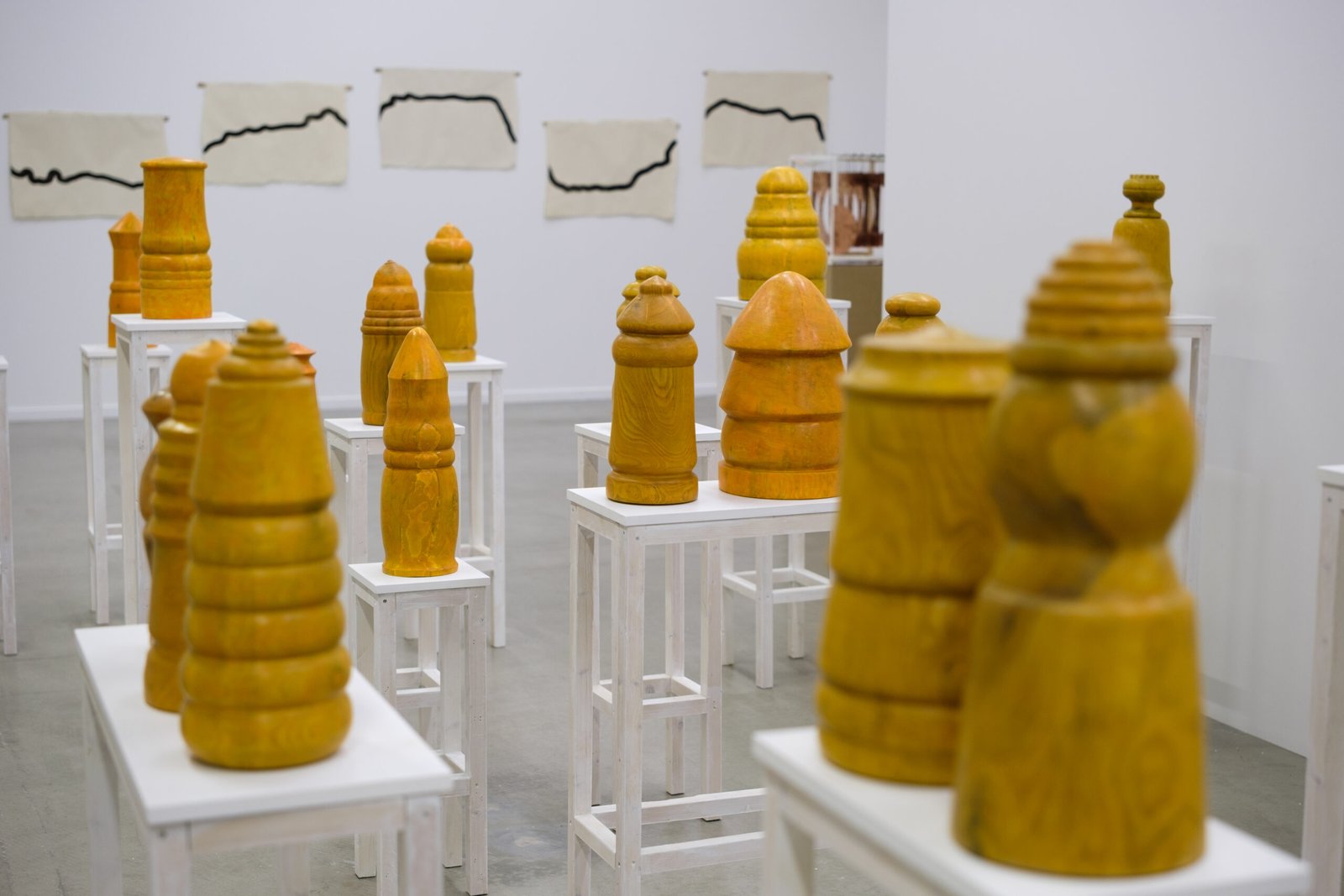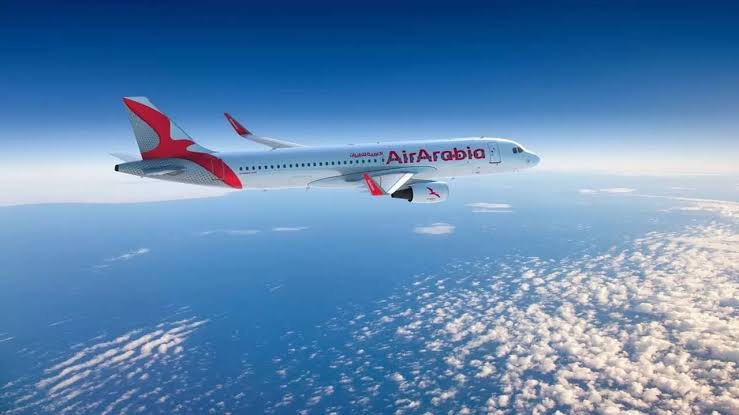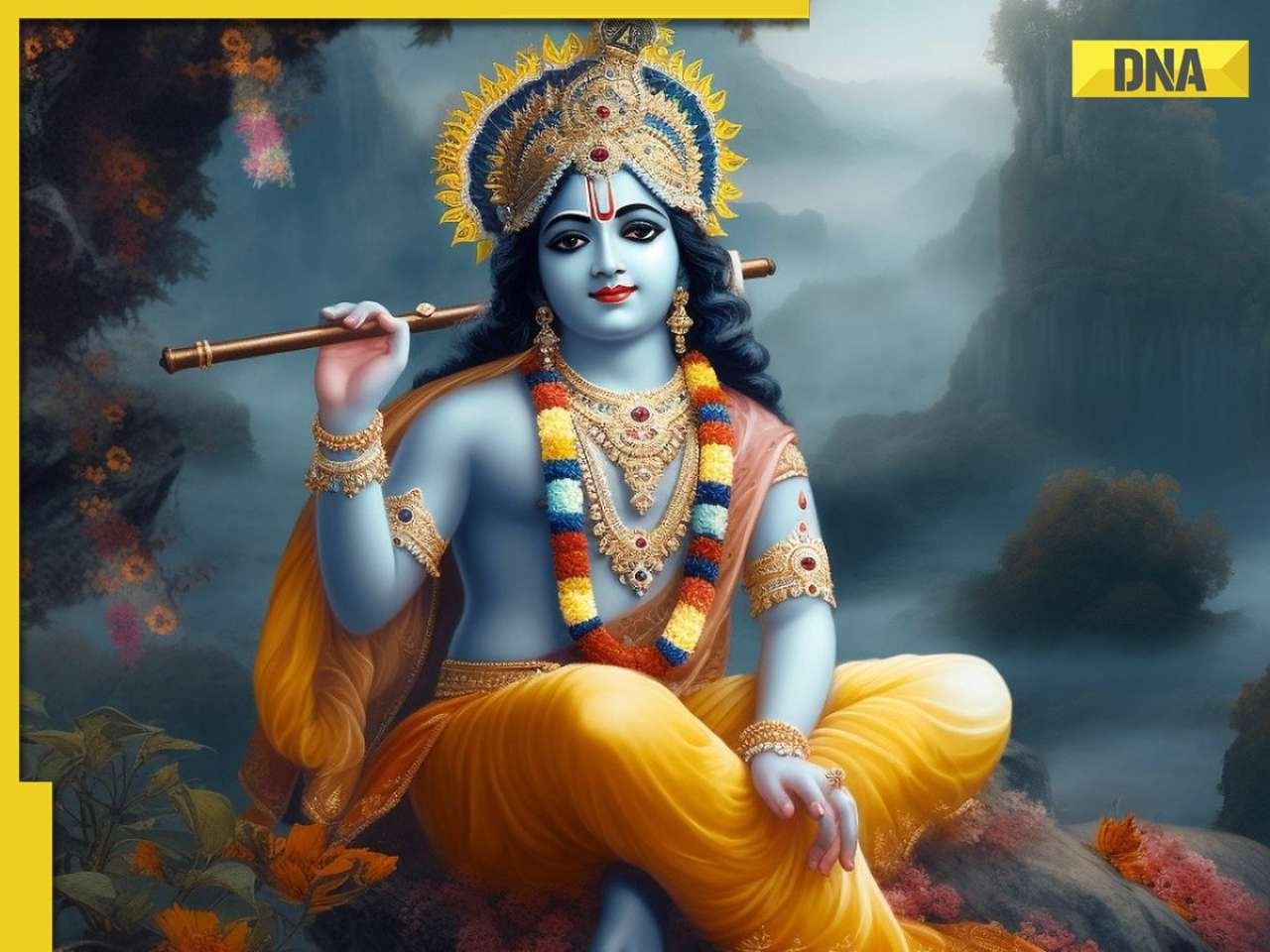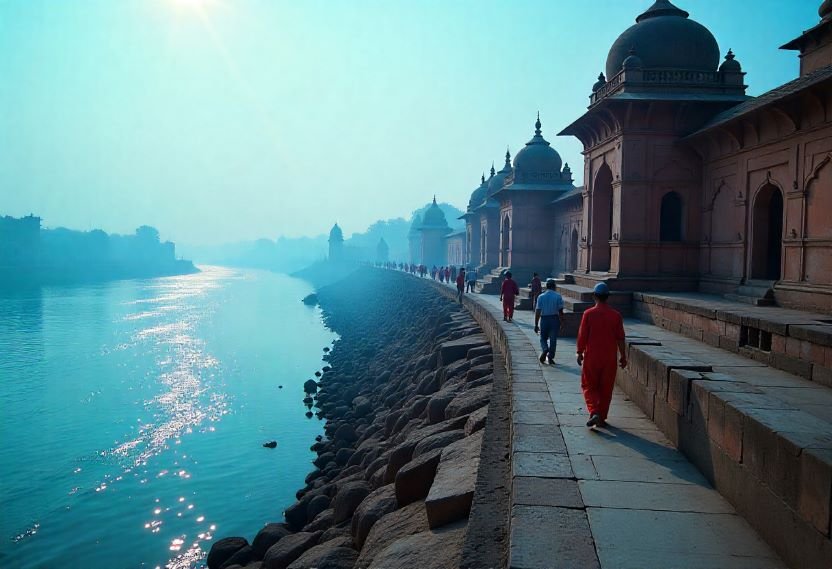Spiritual Travel
From Iceland — Sacred Spaces, Sacred Places: Icelandic Artists In Varanasi

“What happens when artists are transported to a studio far away from the comfort zone of the familiar?” This question lies at the heart of the project that brought Among Gods and Mortals: Icelandic Artists in Varanasi to life — an exhibition currently on view at the charming Listasafn Árnesinga in Hveragerði, just a 40-minute drive from Reykjavík.
From sparsely populated Iceland, with its volcanic landscapes and crystal-clear waters, six established artists travelled to the spiritual city of Varanasi, where open-air cremations are performed on the Ganges River, narrow alleyways pulse with life, and a unique mix of sacred and pungent smells activates your senses, for a month-long stay at Kriti Gallery and Anandvan Residency.
Where it started
The exhibition’s idea traces back to photographer and writer Einar Falur Ingólfsson, who, since his first trip in 1999, has frequently returned to India over the years. There, he was introduced to founders of Kriti Gallery, Navneet Raman and Petra Manefeld, and historian Ajay Pandey, who guides artists in residence through the city. Einar Falur got the idea to bring a group of artists — Eygló Harðardóttir, Guðjón Ketilsson, Margrét H. Blöndal, Sigurður Árni Sigurðsson, Sólveig Aðalsteinsdóttir — from Iceland to Kriti to see what might emerge from their time spent in the holy city.
“What’s really important is they weren’t making art of India,” stresses curator Pari Stave as we meet in Reykjavík a few days after I visited the exhibition. “They were taking from their experience of this place and using what was relevant to them in their works. The works are very much their works, but it just happens that they’re inflected with this influence of having been to India.”
“Among Gods and Mortals” by Atli Freyr Steinsson
Moving images
Working with the concept of time has become an important focus of Einar Falur’s recent work. Take for example his documentation of the weather over the course of a year, or his project following in the footsteps of Iceland’s first photographer, Sigfús Eymundsson. In India, he approached his surroundings through a similar patient lens, presenting at the exhibition a triptych of photographs taken from the exact same angle year after year — showing subtle shifts in a building’s facade and the environment around it. Another of his images on view captures a skinny horse standing quietly amid the chaos of Indian infrastructure: trash, tangled wires, residential buildings and all sorts of transport coexisting together.
“They capture these fleeting moments that you could just walk by.”
“It almost feels like this ghostly image,” says Pari. “That’s a very beautiful picture. It interests me because it may not necessarily be a picture that an Indian photographer would take,” says Pari. “Maybe it takes an outsider’s view of looking in.”
The opposite wall displays a series of “moving images” presented as a continuous loop with sound. They capture moments from daily life in Varanasi — morning commute on a cycle rickshaw, the chatter of street vendors, empty alleys where not much seems to happen at all. But once you add the city’s trademark splash of colour and the layered soundtrack of honks and chants, the whole room comes to life.
“They capture these fleeting moments that you could just walk by, or they might just seem like part of the theatre of the street. But then when you look closely at them, each one of them is a little narrative that has a beautiful story to it,” Pari explains. You wouldn’t expect to be so easily transported from an indigo-blue room in sleepy Hveragerði to India on this Sunday afternoon, but there you are.
Varanasi forms and palettes
Pari tells me the artists who visited the residency in 2023 and 2024 took full advantage of immersing themselves in a new and strange environment. “It was hot, humid, steamy and rainy. Lush vegetation, streets filled with people, and a whole different way of navigating on the street too — because of the crowds and just the sounds, the scents, the flavours, and the colour,” she recalls. “It can’t help but be digested.”
Artist Eygló Harðardóttir, for example, was particularly inspired by a traditional raga music concert during her stay and created a series of paintings titled Raga – Tilbrigði í lit /Colours of Raga. “For those paintings, she used pure pigments that she had bought in Jaipur,” Pari explains. Using traditional miniature brushes, Eygló achieves a delicate finesse in the works, using pigments made from plants and semi-precious stones mixed with a binding solution.
Similarly, Guðjón Ketilsson found inspiration after a visit to the archaeological site at Sarnath. Drawing from the site’s carved votive stone stupas, Guðjón created a series of pencil drawings exploring the dome-shaped form of the stupa. After returning to Iceland, he expanded this idea into a series of wooden sculptures of varying sizes, installed on pedestals. The sculptures are painted in different shades of saffron — a colour that caught Guðjón’s eye during his stay in India.
In addition to the beautiful birch tendril sculptures, Sólveig Aðalsteinsdóttir’s residency inspired a series of eight-panel black outline drawings, for which she even took a course in Chinese calligraphy to master controlling a thick brush. “She’s one of these artists who walks, observes and absorbs what she sees,” says Pari. “These black ink drawings on paper came out of what she was seeing in the streetscape — the profile of a sacred cow’s back, or just the undulation of the river. She was picking up on the rhythms that she found in the street life and channelling them into this minimalist but highly evocative line. It’s just one line coursing through several pieces of paper, but it’s very powerful,” Pari adds.
Margrét H. Blöndal, known for her extraordinary sense of colour, brought to the exhibition 16 minimalist drawings inspired by what she observed on the streets of Varanasi — the heat, humidity, stray dogs, the sound of car horns. Sigurður Árni Sigurðsson contributed two-dimensional paintings that appear three-dimensional thanks to hovering, perforated forms. “He was picking up maybe not so much on the shapes he was seeing in the landscape, but on the colour,” says Pari.
One cannot think of two cultures more starkly opposite than Iceland and India, both culturally and socially. But Pari stresses once again that this exhibition is not about learning about India; instead, you’ll actually learn more about these six artists. “For artists, the studio is a sacred place,” she says. “It’s where you go to contemplate, to think and to work. What’s so interesting to me is seeing what happens in that exciting moment when the artists’ sacred spaces are transported to [another] sacred place.”
Among Gods and Mortals: Icelandic Artists in Varanasi is on view at Listasafn Árnesinga in Hveragerði until August 24. Entry to the museum is free. Don’t miss the curator talk with Pari Stave on July 5 at 15:00.
Spiritual Travel
Saudi Arabia sets record with 140k flights during Hajj 2025

Saudi Arabia set new records for air traffic during the Hajj 1446 AH (2025), managing over 140,000 domestic and international flights. This figure marked an 8% increase compared to the previous year, showcasing the Kingdom’s growing capability in handling large-scale religious travel. The successful movement of millions of pilgrims by air highlights Saudi Arabia’s strong logistics network, use of advanced technologies, and efficient coordination between airports and air navigation teams. This achievement reinforces the country’s role as a key player in global religious tourism.
The arrival and departure phases were handled with excellent precision. During the arrival phase, from Dhu Al-Qidah 1 to Dhu Al-Hijjah 8, a total of 74,902 flights were recorded—a 15% rise from last year. The departure phase, from Dhu Al-Hijjah 23 to Muharram 15, saw 66,072 flights, a 2% increase. On Dhu Al-Hijjah 2, the Kingdom recorded its highest single-day aircraft movements with 2,338 flights. These milestones reflect strong planning and readiness for peak travel seasons.
A total of 213 airlines participated in the Hajj 2025 season, significantly enhancing global connectivity. This shows Saudi Arabia’s importance as a central hub for Muslim pilgrims worldwide. Pilgrims from various continents accessed the Kingdom smoothly, benefiting from improved air services and facilities. The increase in airline participation highlights Saudi Arabia’s rising global reputation in aviation, particularly in supporting international religious travel through expanded air corridors and partnerships.
The Saudi Air Navigation Services (SANS) organisation played a critical role in this success. They deployed advanced air traffic management technologies and highly skilled professionals to ensure safe and smooth air operations. Engineers, controllers, and maintenance staff worked continuously to manage the high traffic volumes without delays. The effective use of technical infrastructure helped maintain safety standards, improve efficiency, and enhance the overall travel experience for millions of pilgrims at major airports.
Saudi Arabia’s success during Hajj 2025 shows that it is ready for future growth in religious tourism. Through strategic planning, modern technologies, and a focus on global partnerships, the Kingdom is setting new benchmarks for managing large-scale international travel. Its efforts not only support smooth pilgrim journeys but also strengthen its image as a global aviation and spiritual hub. This performance underlines the country’s commitment to safe, well-organised, and spiritually enriching experiences for all visitors.
Spiritual Travel
6 Indian cities where Lord Krishna’s divine presence still lives on

1.Mathura
Mathura, revered as the birthplace of Lord Krishna, holds immense spiritual significance in Hinduism. The Krishna Janmabhoomi Temple stands at the exact spot where he is believed to have been born in a prison cell. The atmosphere of the city is steeped in devotion, especially during Janmashtami, when thousands of devotees gather to relive the divine birth through rituals, music, and processions. Every corner of this ancient city echoes tales from Krishna’s early life.
Spiritual Travel
Uttar Pradesh Revitalizes Religious Tourism with Nine Crore Rupees Investment in Lucknow’s Temples and Riverfronts

Wednesday, August 6, 2025
As part of broader efforts to develop the tourism potential of the state, the Uttar Pradesh Tourism Department has sanctioned ₹9 crore funding to restore important religious and cultural sites in Lucknow. Famous temples and the riverfront areas on the Gomti River, considered the heart of the city, will be enhanced as part of this project which received approval in August 2025. This is likely to enhance religious tourism in Lucknow and enrich the experience for domestic and overseas tourists visiting some of the city’s cherished spiritual sites.
Key Projects Under the ₹9 Crore Plan
The development scheme comprises ten projects which enhances the religious and cultural tourism archetypes in Lucknow. The government of Uttar Pradesh has set aside some funds for the restoration and repairs of some important temples and also for the development of the riverfronts to facilitate more pilgrims and tourists. Some of the important projects are:
- Sheetla Mata Temple, Kakori: ₹1 crore has been set aside for restoration work on the Goddess Sheetla temple which is an important temple for the local devotees.
- Koneshwar Mahadev Temple, Chowk: Another ₹1 crore has been allocated for the servicing of the ancient Shiva temple which is visited by a large number of people paying their respects to Lord Shiva.
- Shiv Temple, Karheta (Ambedkar Nagar Ward):₹1 crore has been assigned for the restauration of the historic temple which is a known for being a spiritually appealing tourist site.
- Kalika Devi Temple, Amlauli Village: The Kalika Devi temple which is popularly worshipped by many people will be provided with ₹1 crore to be used towards the renovation and modernization works to better serve the devotees.
- Shri Hanuman Temple, Athnaru (Sukhmadatt Nagar): The Shri Hanuman Temple, which is a major worship place for many people will also have ₹1 crore allocated for its restoration.
- Shri Mahadev Jalsai Nath Temple: This temple will receive ₹1 crore earmarked for the enhancement of its development which will add to the spiritual services provided in the city.
- Shri Jwala Mata Temple, Barigwan: ₹50 lakh is to be provided for the enhancement works to the important temple of Goddess Jwala Mata which will improve the religious tourism in the area.
- Sanjhiya Ghat, Gomti River: ₹1 crore will be spent on the development of Sanjhiya Ghat on the Gomti River, an area visited by people for spiritual and ceremonial activities and offering some of the services.
- Shri Ram Janki Temple: The Shri Ram Janki Temple is receiving ₹1 crore for further development on the infrastructure. The shrine is uniquely positioned in such a way that shrines of both Rama and Janki can be visited.
- Ghatghata Baba Devsthan, Salehnagar Village: ₹50 lakh has been allocated for this temple, which holds deep significance for locals.
Alongside safeguarding the spiritual legacy, these initiatives seek to improve the overall experience for visitors. Aside from reconstruction of the ancient temples, the state government also aims to implement a sustainable model that boosts tourism while honoring the site’s cultural and religious values.
Improvement Plans for Visitor Facilities
As part of these temple restorations, the Government of Uttar Pradesh allocated significantly within the ₹9 crore budget towards developing the infrstruture of these religious sites. The upgrades will help in making the sites easier and more pleasant to access for travelers. The major upgrades include:
- Lighting Installations: To illuminate the temples and surrounding areas, improving the visual appeal and providing greater accessibility during evening hours.
- Sanitation and Hygiene Facilities: Ensuring that visitors have access to clean and well-maintained restroom facilities, which is crucial for sustaining the increasing foot traffic in these religious sites.
- Drinking Water Stations: To ensure the comfort and convenience of visitors, water stations will be installed at key locations to meet the needs of the increasing number of tourists.
- Pathway Development: New pathways will be constructed around the temples and riverfronts, making it easier for visitors to access the sites.
- Tourist Information Centers: These centers will be set up to offer guidance and information about the historical and spiritual significance of the temples, enhancing the overall visitor experience.
Promoting Religious Tourism as a Key Economic Driver
The ₹9 crores tourism development plan for UP is intended for religious tourism which is important for the state’s economic development. UP’s infrastructure for tourism is expected to improve which will enhance economic development for the state. Improvement of infrastructure will allow better access to important spiritual site to enhance the number of visitors and help with economic development. Improvement of sites will also assist in providing employment and preserving cultural and local businesses.
Additionally, the plan aligns with Uttar Pradesh’s ongoing commitment to preserving its rich religious and cultural heritage. The state has long been a hub for spiritual tourism, and with the proposed upgrades, it is positioning itself to become an even more attractive destination for pilgrims and tourists alike.
Conclusion: A Bright Future for Religious Tourism in Lucknow
Uttar Pradesh’s spending on restoring and building religious tourism sites signifies an important move towards augmenting the cultural heritage of the region while improving the experience for tourists. The investment will make certain that the sacred sites continue to evoke and attract pilgrims for years to come. The initial development of Lucknow’s spiritual landmarks will further aid the growth of tourism and create sustainable and enriching experiences for visitors from different parts of the globe. The state is also investing ₹9 crores for the initial development of Lucknow’s spiritual landmarks.
The restoration of Lucknow’s temples and riverfronts are set to boost the city’s tourism greatly. They will not only capture the attention of tourists whose interests lie in spirituality but will also attract culture enthusiasts. This is one of the few times when tourists can easily access the core of the ancient spiritual heritage in the state of Uttar Pradesh.
-

 Brand Stories2 weeks ago
Brand Stories2 weeks agoBloom Hotels: A Modern Vision of Hospitality Redefining Travel
-

 Brand Stories2 weeks ago
Brand Stories2 weeks agoCheQin.ai sets a new standard for hotel booking with its AI capabilities: empowering travellers to bargain, choose the best, and book with clarity.
-

 Destinations & Things To Do2 weeks ago
Destinations & Things To Do2 weeks agoUntouched Destinations: Stunning Hidden Gems You Must Visit
-

 Destinations & Things To Do2 weeks ago
Destinations & Things To Do2 weeks agoThis Hidden Beach in India Glows at Night-But Only in One Secret Season
-

 AI in Travel2 weeks ago
AI in Travel2 weeks agoAI Travel Revolution: Must-Have Guide to the Best Experience
-

 Brand Stories1 month ago
Brand Stories1 month agoVoice AI Startup ElevenLabs Plans to Add Hubs Around the World
-

 Brand Stories4 weeks ago
Brand Stories4 weeks agoHow Elon Musk’s rogue Grok chatbot became a cautionary AI tale
-

 Brand Stories2 weeks ago
Brand Stories2 weeks agoContactless Hospitality: Why Remote Management Technology Is Key to Seamless Guest Experiences
-

 Asia Travel Pulse1 month ago
Asia Travel Pulse1 month agoLooking For Adventure In Asia? Here Are 7 Epic Destinations You Need To Experience At Least Once – Zee News
-

 AI in Travel1 month ago
AI in Travel1 month ago‘Will AI take my job?’ A trip to a Beijing fortune-telling bar to see what lies ahead | China
